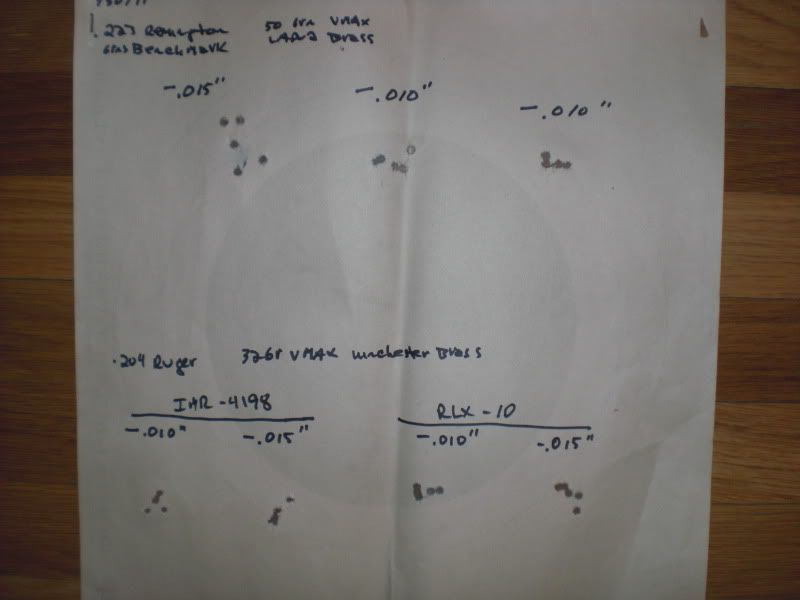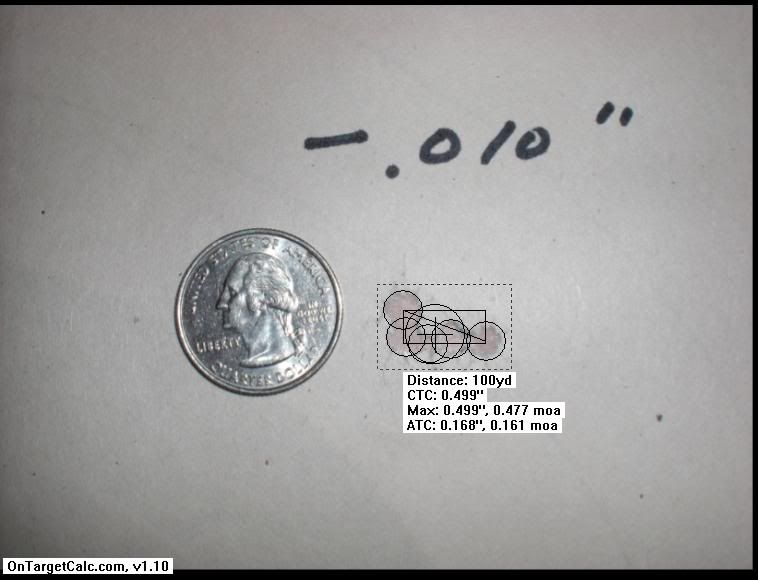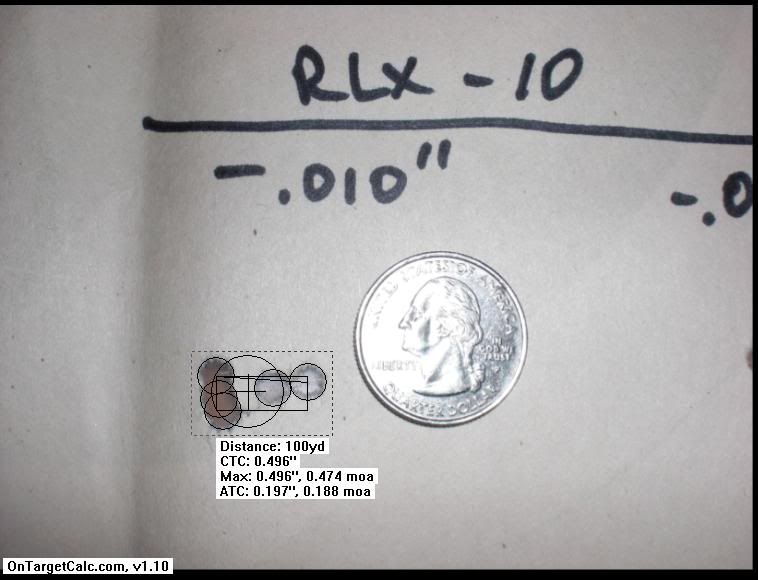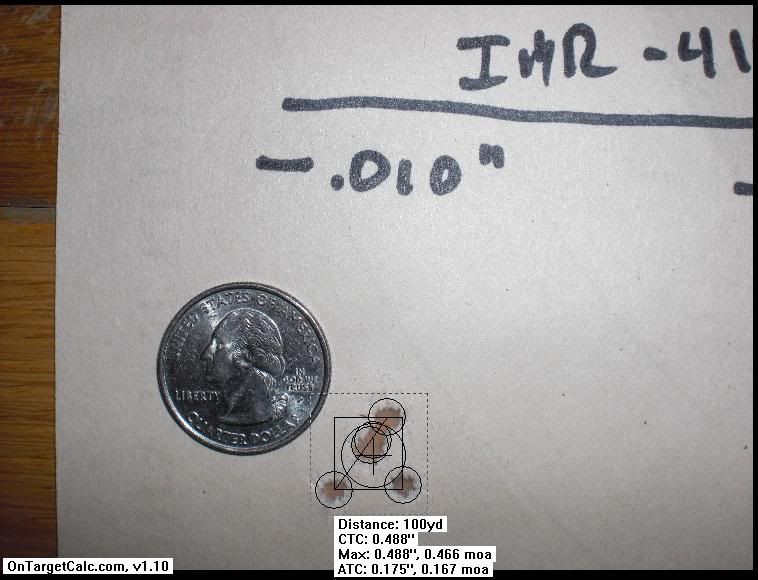This past week I got a few new reloading goodies in the mail and deciding to put them to test right away. I purchased a couple of Redding Competition Seating Dies for .223 and .204 so I could do some precise experimentation with seating depth. I also picked up some battery operated IR shroud lights for my Chronograph, which now allows me to use the instrument within the dark confines of my underground shooting tunnel
I had several loads I was testing for my Cooper .204. While the gun has consistently shot sub MOA I have never yet been satisfied with the accuracy Ive achieved thus far. I was now looking to test varying loads of IMR 4198 and Reloader 10 and varying COALs to shoot right at the lands and .005" off the lands. The picture below shows the overall results from the test.
One of my strong assumptions was that a very low Standard Deviation in average mv would most likely help to achieve the tightest groups, all else being equal. The pictures above do not necessarily support this assumption, or more likely the 100 yard range is insuffucient to see the effects of the variation.
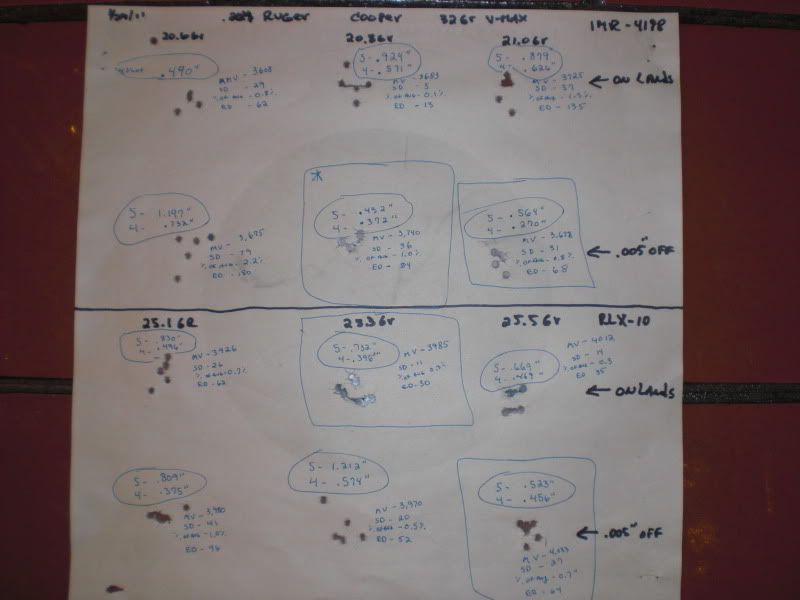
My two favorite test loads that offer the best combination of group tightness, MV, and low standard deviation came from .005" off the lands. My next (and hopefully final!) step will be to focus on these two specific loads and extend the COAL experiment to distances of .010" and .015" off the lands and I will hopefully be done with cracking the code for this rifle. At least for now
25.5 Grns of RLX-10
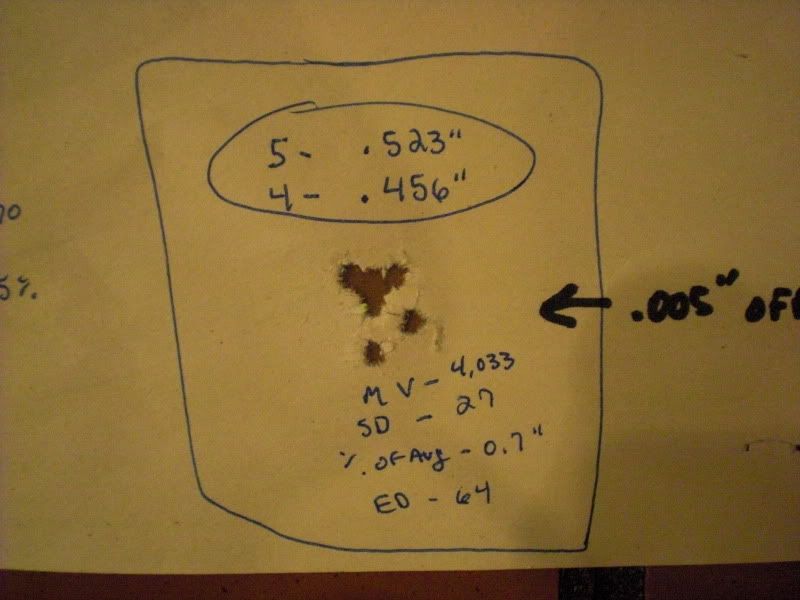
21.0 grns of IMR-4198
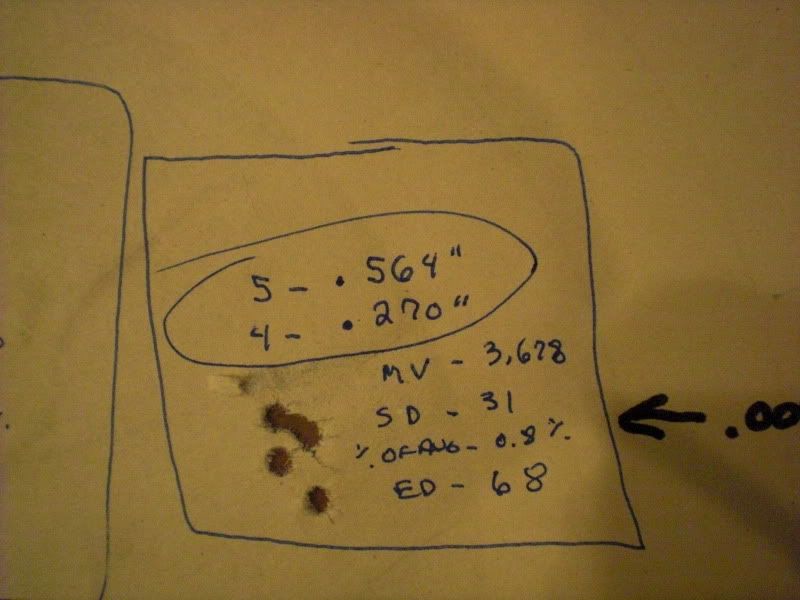
After putting away the .204 I pulled out my Howa 1500 in .223 for some very brief experimentation with a time tested load. The top three targets show the results of shooting COALs varying from .005" jammed into the lands, at the lands, and jumping .005" to the lands. I was surprised to see how little pressure spike occurred when shooting from jammed into the lands and also surprised to see how much the gun does not like that COAL. As with the .204, I will continue to experiment with extending the jump to .010" and .015".
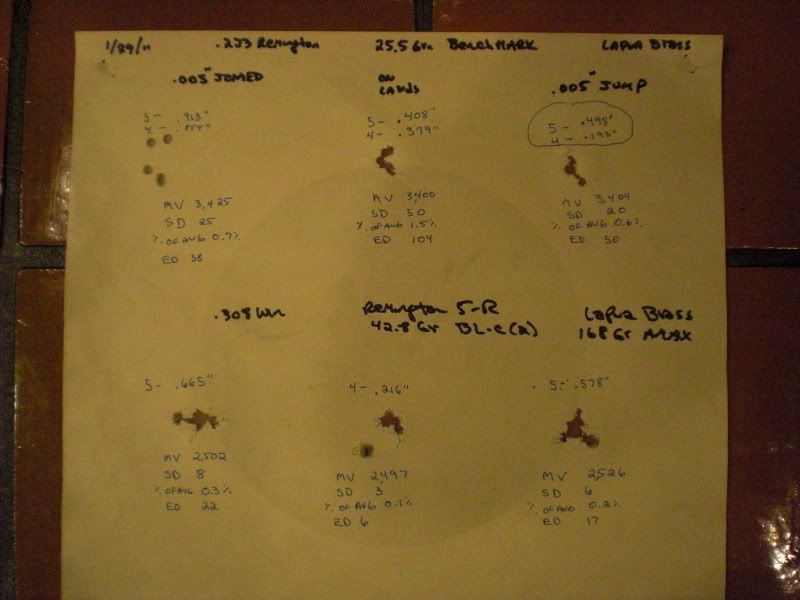
my optimal, so far...

The Last thing I did for the day was to test the SDs of MV on my favorite load for my .308 5-R. I am pretty much content with this load and will plan on using it for long range competition later this year. As such, it is naturally important to confirm the lowest SDs possible, given that any deviation becomes increasingly evident at long ranges.
Upon testing, I was happily amazed by the extreme low numbers, which I attribute in large part to the consistency of Lapua brass. I cant say enough good things about this brass! The only "flier" in the above group was caused by a shot that spiked 83 fps for some reason. I could feel it in the bolt tension as I was chambering the round and new something was out of kilter.

Overall, a great and productive day. Cant wait to get back out there!
I had several loads I was testing for my Cooper .204. While the gun has consistently shot sub MOA I have never yet been satisfied with the accuracy Ive achieved thus far. I was now looking to test varying loads of IMR 4198 and Reloader 10 and varying COALs to shoot right at the lands and .005" off the lands. The picture below shows the overall results from the test.
One of my strong assumptions was that a very low Standard Deviation in average mv would most likely help to achieve the tightest groups, all else being equal. The pictures above do not necessarily support this assumption, or more likely the 100 yard range is insuffucient to see the effects of the variation.

My two favorite test loads that offer the best combination of group tightness, MV, and low standard deviation came from .005" off the lands. My next (and hopefully final!) step will be to focus on these two specific loads and extend the COAL experiment to distances of .010" and .015" off the lands and I will hopefully be done with cracking the code for this rifle. At least for now
25.5 Grns of RLX-10

21.0 grns of IMR-4198

After putting away the .204 I pulled out my Howa 1500 in .223 for some very brief experimentation with a time tested load. The top three targets show the results of shooting COALs varying from .005" jammed into the lands, at the lands, and jumping .005" to the lands. I was surprised to see how little pressure spike occurred when shooting from jammed into the lands and also surprised to see how much the gun does not like that COAL. As with the .204, I will continue to experiment with extending the jump to .010" and .015".

my optimal, so far...

The Last thing I did for the day was to test the SDs of MV on my favorite load for my .308 5-R. I am pretty much content with this load and will plan on using it for long range competition later this year. As such, it is naturally important to confirm the lowest SDs possible, given that any deviation becomes increasingly evident at long ranges.
Upon testing, I was happily amazed by the extreme low numbers, which I attribute in large part to the consistency of Lapua brass. I cant say enough good things about this brass! The only "flier" in the above group was caused by a shot that spiked 83 fps for some reason. I could feel it in the bolt tension as I was chambering the round and new something was out of kilter.

Overall, a great and productive day. Cant wait to get back out there!

